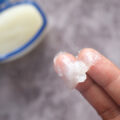Tues: 8:30am - 3:00pm
Wed: 12:00pm - 6:00pm
Thurs: 8:30am - 3:00pm
Fri: Closed
Sat: 8:30am - 12:30pm
Sun: Closed
Greenvale, NY 11548
Top 7 Most Common Medical Skin Conditions


When it comes to our health, one of the first things we notice is any change in the appearance of our skin. Because other people will notice, too, a skin condition can become more than a health issue. It’s a social concern as well. It’s awkward to be showering after a workout, wondering if anyone notices that eczema on our elbows or fungus on our toes. Got a nasty rash on your arm? Watch people go out of their way to give you plenty of space at the coffee shop.
Skin conditions even impact our wardrobe choices. Think about it. If you have an outbreak of psoriasis on your legs, you’ll most likely choose to wear slacks or a long skirt rather than those shorts that might be more comfortable on a hot day.
It doesn’t have to be this way. Your skin condition shouldn’t impact your life. This list covers the most common skin conditions dermatologists treat every day with great success. Don’t suffer alone. Your dermatologist can help.
#7 Fungal, viral and bacterial infections
Skin and nail infections are typically caused by either fungus, viruses, bacteria or yeast, the CDC reports. Untreated infections can cause itchy, inflamed skin. The appearance can also be embarrassing.
Athlete’s foot is a common example of a fungal condition.
Viruses can cause warts and certain virus strains cause herpes.
Bacterial infections of the skin, if allowed to spread, can create serious and even life-threatening medical conditions if not treated with antibiotics.
Your dermatologist can diagnose the type of infection and plan the right course of treatment.
#6 Rosacea
Rosacea appears as a redness on the face. It may look like sunburn or blush on the cheeks, nose or chin that blooms and goes away only to return unexpectedly. In time, the color intensifies and becomes ruddier in appearance. Blood vessels below the skin may eventually appear, note the American Academy of Dermatology. Without appropriate treatment, bumps and pimples can also develop, worsening over time. In severe cases, especially in men, the nose may become swollen and enlarged.
There’s no cure for rosacea. However, medication, laser therapy and lifestyle changes can help control symptoms.
Warning signs of rosacea:
• A burning sensation on the face, especially during periods of emotional stress, environmental extremes (heat, sun and wind), some facial products, spicy food and certain beverages (alcohol, hot drinks).
• Redness on the cheeks, nose, chin or forehead.
• Small blood vessels on the face.
• Bumps or pimples.
• Eye irritation.
Your dermatologist can evaluate the stage of your condition and provide a rosacea management program specific to your needs. This may include a combination of skincare products, triggers to avoid, prescription medications and laser treatments.
#5 Pigmentation
Aging skin and skin exposed to ultraviolet radiation can trigger pigmentation, where the tone and color of the skin changes. This condition includes discoloration, brown spots or age spots. A variety of treatments are available for various skin types, depending on the extent of the pigmentation, the National Library of Medicine reports. Common treatments include chemical peels, laser therapy and an active skincare regimen.
#4 Psoriasis
Psoriasis is an itchy (and sometimes painful) chronic skin disorder that is caused by an overactive immune system. New skin cells form too quickly and build up on the surface of the skin in dry patches. In severe cases they can be thick and red, with silvery scales. Psoriasis usually appears on the elbows, knees, legs, face and scalp. Sometimes the scales form on the bottom of the feet.
Dermatologists often prescribe topical creams or oral medication to help suppress an overactive immune system. Corticosteroids are the most frequently prescribed medications for treating mild to moderate psoriasis, according to the Mayo Clinic. They are available as oils, ointments, creams, lotions, gels, foams, sprays and shampoos.
#3 Eczema
Eczema or dermatitis presents as pink-red, scaly skin which is itchy and can become infected if not treated.
Most children with atopic dermatitis grow out of the condition when their skin matures, however about 10% will continue to suffer with eczema into adulthood.
The condition generally appears in children within the first 6 months to 5 years of age. It usually develops on a baby’s face (mainly the cheeks and chin), and then spreads anywhere on the body – though most often within the folds of the elbows and knees), according to the National Eczema Association.
Adults can also experience eczema, even if they never had symptoms as a child. The good news is, eczema is not contagious. Your dermatologist can identify the type of eczema and the most effective way to treat your particular condition. Keeping the skin hydrated is an important step in getting rid of eczema.
#2 Skin Cancer
Skin cancer is among the most common conditions seen by dermatologists. It is serious and can be life threatening. In fact, skin cancer is the most common form of cancer in the United States, notes The Mayo Clinic. Melanoma is the most dangerous form of skin cancer, but if diagnosed early enough it’s also relatively easy to cure.
If you notice any changes to skin growths and moles, such as the size, shape, color and thickness, spots that crust, bleed, itch, hurt or scab, then you should see a dermatologist to receive a proper diagnosis. Don’t delay.
Your dermatologist should examine your skin by performing a full body skin exam at least annually for any new signs of skin cancer and every six months for individuals with a history of skin cancer or genetic predisposition.
#1 Acne
No surprise here. Acne is the most common skin condition and is the #1 complaint seen by dermatologists.
Acne is a broad term used to describe whiteheads, blackheads, pimples and cysts. These usually form through an over-production of oil in the skin. This results in sebum – a mixture of oil, bacteria and dead skin cells – which can clog pores and cause acne.
Acne typically begins during puberty and usually, though not always, subsides after a person reaches adulthood.
Your dermatologist can prepare a treatment plan to eradicate those unsightly pimples. This may include prescription medicines, including ointments and creams, as well as diet and skin care recommendations.
If you have facial scars as a result of acne, dermatology treatments are available to lessen their appearance and even erase signs of scarring.
While acne is a common curse of the teenage years, in some cases it may be a sign of a serious medical issue as we get older. Women experiencing severe acne will want to see a dermatologist to check for a condition known as polycystic ovary syndrome (PCOS), a condition in which the ovaries produce an abnormal amount of androgens. These are male sex hormones that are usually present in women in small amounts. The name polycystic ovary syndrome describes the numerous small cysts (fluid-filled sacs) that form in the ovaries, Johns Hopkins Medicine reports. Complications from PCOS include type 2 diabetes, high blood pressure, problems with the heart and blood vessels, and uterine cancer.
Let Walk-in Dermatology Take Care of You
If you have concerns about any skin condition and need dependable answers, you don’t have to wait. Walk-in Dermatology is here to keep you healthy. Our team of dermatologists and experienced healthcare staff will address your concerns and provide the necessary care for all your skin conditions. We can set up a Video Visit and even prescribe medications remotely, or you can schedule an appointment with us online. The choice is yours. But don’t wait until the problem gets worse. Contact us today.








